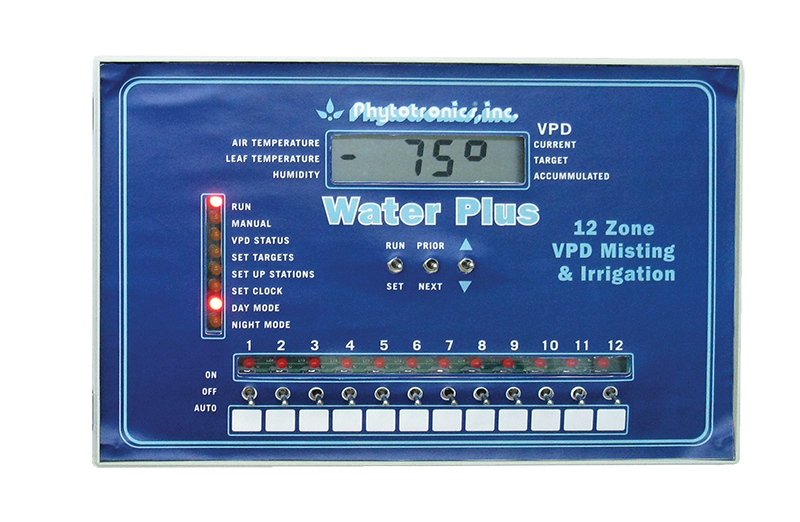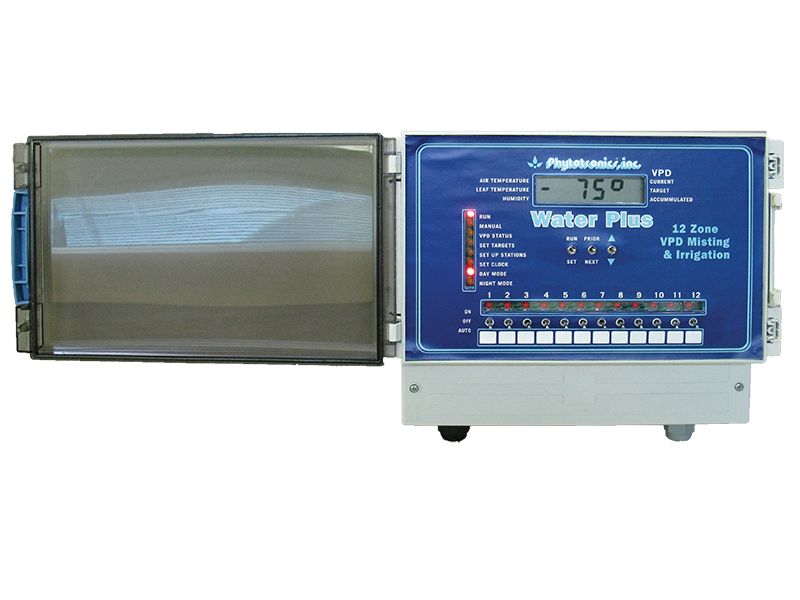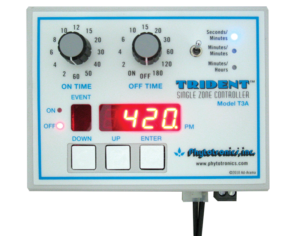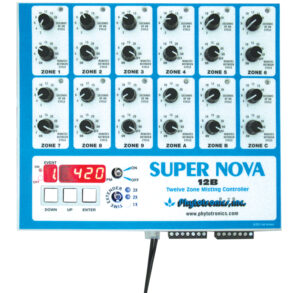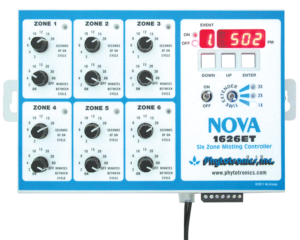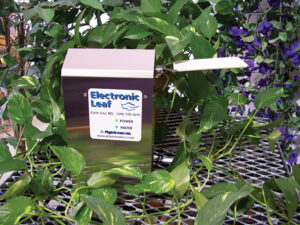Description
- 12 independent stations
- Continuous Vapor Pressure Deficit adjustments
- You set the on time, seconds or minutes
- The controller determines the off time based on current conditions and VPD value you set
- 24V transformer and power cord included, 24VAC output
- Night watering disable functions
- Includes all of the other features of the Water Max
- 1 yr warranty
The WATER PLUS is a “state of the art” VPD misting and irrigation control system. Each station may be individually programmed for either misting, or irrigation. The Water Plus has many on board features that you can also use to customize it for your particular needs.
VPD SENSOR
Using VPD (Vapor Pressure Deficit) for precise misting and irrigation within the greenhouse environment is an exacting and precise manner to deliver exactly the amount of water that your crops will require in response to the environmental conditions in which they are growing. The VPD sensor consists of three components.
They are:
- a highly accurate humidity sensor
- a precision ambient temperature sensor
- a second precision temperature sensor to simulate the radiated plant leaf temperature.
UNDERSTANDING VAPOR PRESSURE DEFICIT (VPD)
WATER PLUS
There has been a significant amount of study by a number of environmental and watering experts concerning this basic principle of using VPD to determine when plants need water. Unlike other methods used to determine watering, using VPD looks at the entire environmental conditions surrounding the plant. The VPD Sensor that we use measures Temperature of the Air, Humidity of the Air, and the Temperature of the Leaf of the plant. With these instantaneous sensor values we can determine the VPD of the plants in the greenhouse at regular intervals (every 10 seconds). As the environmental conditions change so does the VPD. By adding the VPD’s together we work our way toward a target where we know the plant must have water. After we water the plant the process starts all over again Just what is Vapor Pressure Deficit (VPD) and how does it relate to plants? Not really a difficult question to answer.
To understand VPD we must understand the following:
- How water moves through a plant.
- A plant’s structure.
- How environmental factors effect plant water use.
Plant Water Movement
The amount of water a plant needs is controlled by what takes place in the leaf, not in the soil. When plants are watered, the roots take up water which moves through the stem to the leaf. There it evaporates into the air. A process known as “transpiration”. As water evaporates from the leaf, leaf tissues start to dry, which results in the leaf pulling more water in through the stem from the roots. This water vapor movement out of the leaf is critical because the faster the water evaporates from the leaf, the more water is taken from the soil and pulled through the plant to satisfy the plants needs. It’s what takes place in the leaf, not the soil that will determine your plants watering requirements. Water evaporates from cells to the air inside the leaf. This air is always saturated at 100 percent relative humidity. Vapor Pressure Deficit is a measure of the difference in the amount of water in the air inside the leaf and the amount in the air around the leaf. The greater this difference, the faster the plant’s lose water.
Plants and the Environment
The best example to understand the basics of VPD is as follows. Let’s take a basin of water and a dry sponge. If you bring the basin of water and the dry sponge together, they’ll try to neutralize each other out. The basin of water will loose water and the dry sponge will gain water. This neutralizing principle happens with plants. If you take a plant and put it into a dry (low humidity) environment the plant will transpire a certain amount. As the Humidity in the air increases, provided the Air & leaf Temperatures remain constant, The VPD decreases and the plant transpires less. If the Leaf Temperature increases and the Humidity and the air Temperature remain constant the VPD increase and the plant transpires more. As you can see, all the environmental factors (Air Temperature, Leaf Temperature, and Humidity) play a part in the water lost by plants through transpiration. If the Air Temperature and the Leaf Temperature are the same and 2 the Humidity of the Air is 100%, there would be no VPD.

